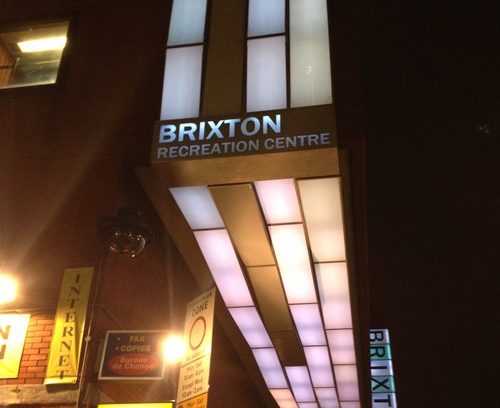This website uses cookies
This website uses cookies to enable it to function properly and to analyse how the website is used. Please click 'Close' to accept and continue using the website.



Laura Chan reports on the threat to the Brixton Recreation Centre: ‘The Brixton Recreation Centre, owned by Lambeth Council, is under threat of demolition to allow redevelopment of its site. A campaign to save ‘The Rec’ (as it’s lovingly known to locals) is in full swing, as users meet regularly to discuss what can be done to save the iconic leisure centre.
At a recent meeting held at the Rec, I was heartened to hear many impassioned users of the centre say how much they value it, praising, its swimming pool, climbing wall, gym and other sporting facilities, and also valuing it as a place to meet and as a local focus Attendees were encouraged to contact their councillors and ask them to support retention. C20 Society is backing the campaign.
Designed by George Finch (working for Lambeth Architect’s Department) in the late seventies, I was struck by how “Herman Hertzberger-ish” the building feels. If the interior planters which line the main atrium on all floors were used (they stand sadly empty now), the sense of accessibility and warmth of this much loved building will only increase. It’s generally well maintained and in good condition, with a major investment in the lighting scheme shown above recently completed. With its exposed walkways at all levels, activities such as judo and bowls can be seen from the upper levels. An unusual swimming experience is created by the undulating timber ceiling and large windows that allow swimmers to see trains go by.
Architecturally interesting in its waffle slab ceiling construction, steel truss roof and a feeling of openness throughout, the Rec does more than serve its function as a leisure centre. Rec user Julian Cripps, member of a local practice, says of the building: “The Rec was the result of an extended design development period that modern architects would only now dream of… The Rec is not only an unrepeatable asset in brick and concrete but, in the unique spaces and combination of provision. It has become a beacon of enlightened provision and symbolic of investment and regeneration of deprived city areas.”
Nelson Mandela visited the centre in 1996 where he and other dignitaries met to discuss schemes launched to regenerate the area after the 1985 riots. At the time Mr Mandela said: “I want to tell you that Britain, especially London and the community of Brixton, were the heartland of the anti-apartheid struggle.”
Speaking at the recent meeting, Steadman Scott confirmed: “This building means more to black people than anything else” – a strong statement that speaks of The Rec’s importance historically, socially and architecturally. Like the nearby Brixton Market buildings, recently listed for their significance to the local community, it is one of those places that really feels as if it belongs to the people who use it. It should certainly not be knocked down.’
Laura Chan
You can find out more about the campaign here and read the Save Brixton Rec blog here.

Become a C20 member today and help save our modern design heritage.
Comments